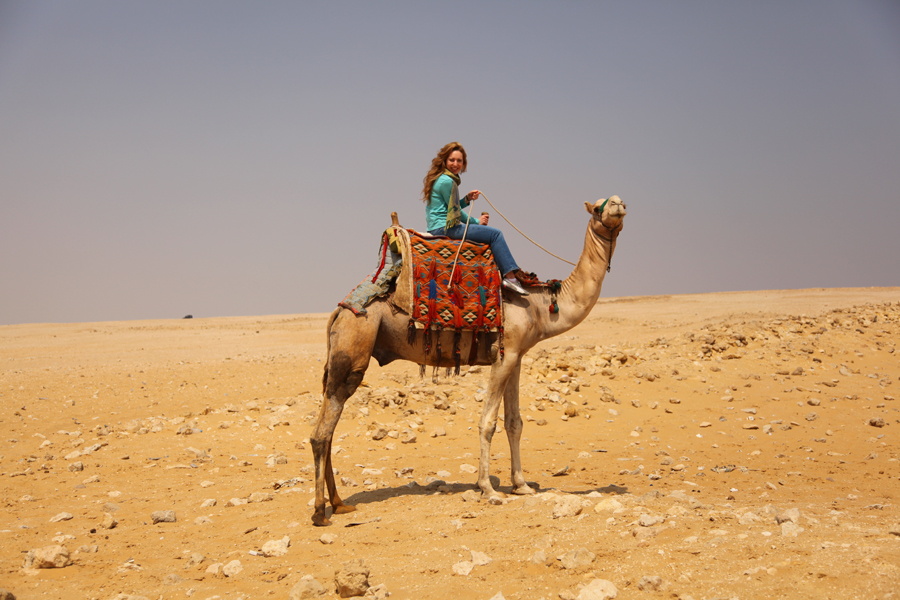Riding camels in Egypt is often portrayed as a quintessential travel experience, a must-do on the itinerary of every wandering soul captivated by the mysteries of the ancient world. Images of tourists perched atop these majestic beasts against the backdrop of the Pyramids of Giza evoke a sense of adventure and timelessness. Yet, as this experience garners both admiration and skepticism, one must ponder: is riding camels in Egypt an authentic plunge into the realm of ancient travel, or a mere tourist trap masking itself in the allure of history?
The romance of history envelops both the camel and the desert. For centuries, camels have been an integral part of Egyptian culture, symbolizing resilience and adaptability. Known as the “ships of the desert,” these magnificent animals have been the companions of traders, nomads, and explorers traversing the harsh arid landscapes. To saddle up and navigate the undulating dunes is to tap into a thread of existence that connects modern travelers with antiquity. It’s an opportunity to feel what it may have been like for those who ventured across the sands thousands of years ago. But is this connection genuine, or have we, in our modern zeal for experience, commodified something sacred?
As one embarks on the camel riding adventure, the initial thrill is palpable. Guided by local handlers who seem to have an innate bond with the creatures, tourists clamber onto their mounts with anticipation. The gentle swaying of the camel, reminiscent of a ship at sea, imparts an unexpected rhythm, and with each step, the vastness of the surrounding desert unveils itself. The panoramic views are breathtaking; the golden sands seem to stretch infinitely, punctuated by the grandeur of the pyramids piercing the azure sky. Such sights conjure an unparalleled sense of wonder—the kind of awe that stirs the soul.
Moreover, the rich tapestry of the Egyptian landscape is imbued with stories—each grain of sand has witnessed the march of history. Riding a camel offers a unique vantage point to appreciate this deep connection to the land. However, this enchanting experience often raises concerns surrounding authenticity. Tourists might find themselves herded like cattle, with hurried handlers urging to capture the perfect selfie against the majestic pyramids. In these moments, the sense of wonder can devolve into a checklist experience, where the moments intended for deeper reflection are overshadowed by commercialism. It is this disparity that leads many to label camel rides as a tourist trap.
Yet, one must consider the motivations underpinning this debate. For some, the idea of embracing adventure and immersing oneself in the cultural fabric of Egypt is paramount. Riding a camel is not merely a fleeting amusement; it symbolizes a tangible connection with a heritage that spans millennia. Practically, it serves to support local economies and communities reliant on tourism. For many shepherds and handlers navigating the delicately balanced ecosystem of tourism, these camel rides are essential for survival and livelihood.
Digging deeper, the fascination with riding camels transcends mere novelty. It invokes a visceral connection to nature and the essence of adventure. Traversing through the desert landscape, one can feel the pull of a bygone era, an echo of battles fought and trades made, the spirit of exploration that has long since faded in our fast-paced world. For those willing to look beyond the bustling crowds and the commercial infrastructure, there exists a chance to appreciate the beauty of this age-old tradition.
Moreover, participating in camel rides often presents myriad opportunities to interact with local artisans and craftsmen, further enriching the experience. Engaging with the people behind the camels reveals the symbiotic relationship that exists within the vibrant tapestry of Egyptian culture. Many handlers are not just guides; they are storytellers, imparting wisdom about the land, its people, and the importance of camels in their way of life. This narrative adds depth to the experience, reminding travelers that they are partaking in a practice that is a thread in the fabric of the local culture.
Nevertheless, it is crucial to acknowledge potential ethical concerns tied to camel tourism. Critics raise alarms about the treatment of camels, highlighting issues including overworking and improper care. Responsible tourism calls for a deliberate choice of operators who prioritize the welfare of their animals, offering the best possible conditions for both camel and rider. Conducting thorough research, consulting reviews, and choosing ethically responsible companies can help mitigate such issues, ensuring that the adventure does not come at the expense of animal welfare.
In conclusion, the experience of riding camels in Egypt elicits a rich tapestry of emotions and considerations. While some may dismiss it as a mere tourist trap rife with commercial excess, for others, it represents a profound encounter with history and culture. It invites contemplation of the coexistence between modern travelers and ancient traditions. As with any travel experience, the magic lies in the intentionality behind the journey. Embracing this activity with open eyes and mindful respect can transform a simple ride into a captivating kinship with the past, bridging the realms of timeless travel with modern exploration. Thus, the answer to the question lies not in simply labeling the experience but in recognizing the layers and narratives woven into it—inviting explorers to partake in the enduring dance between history and humanity.
